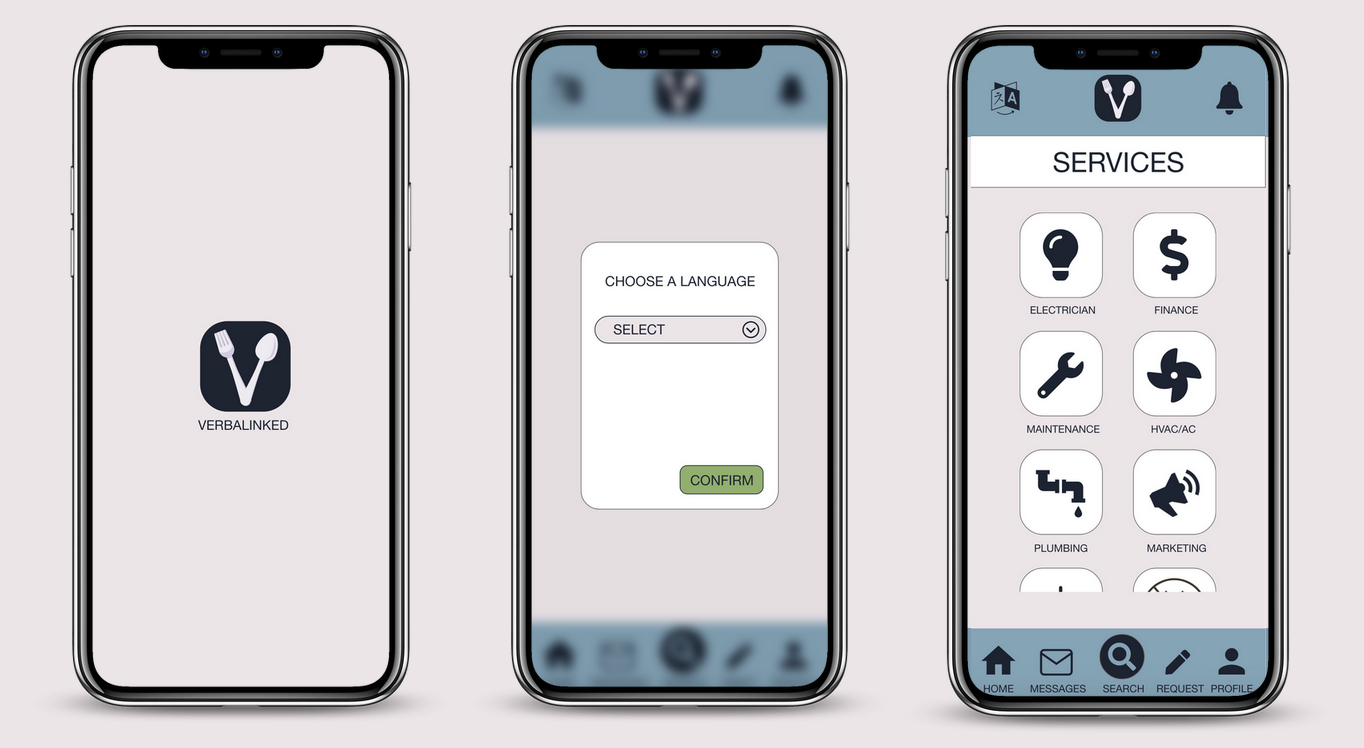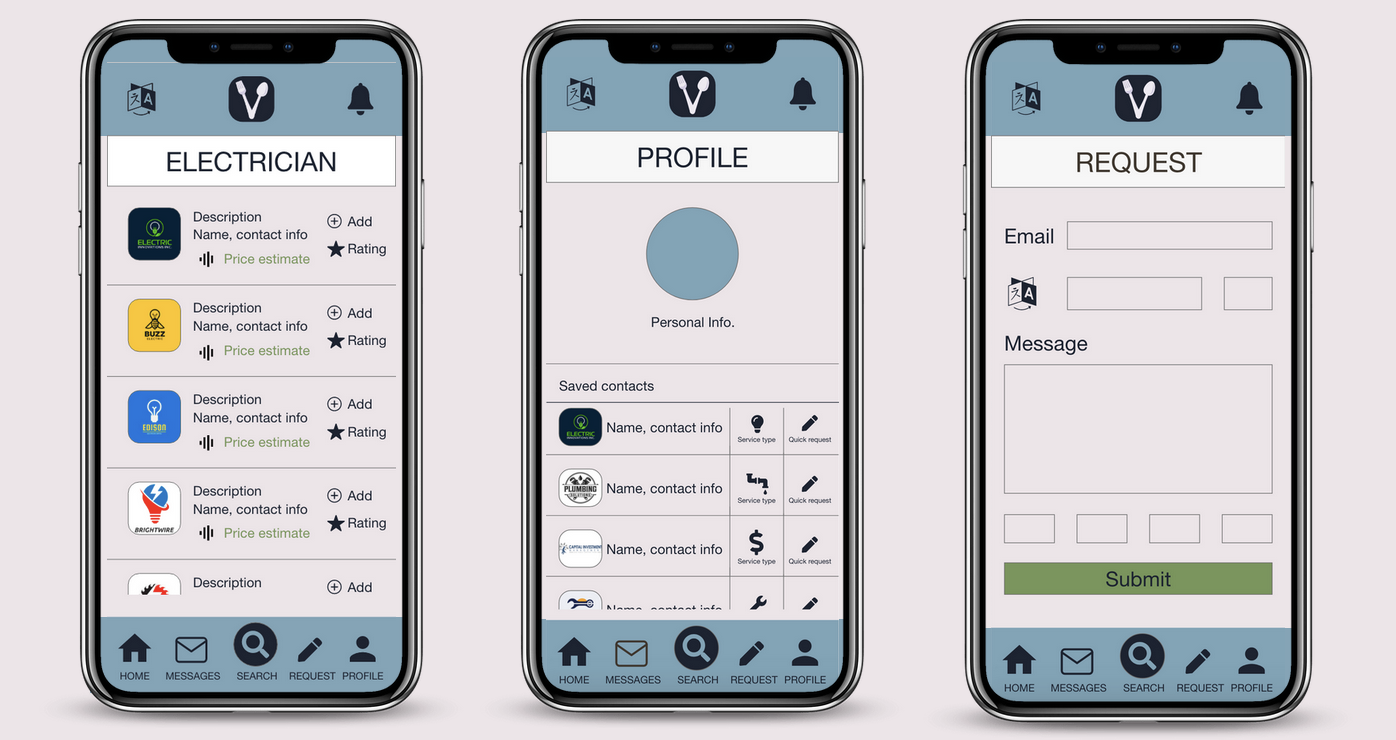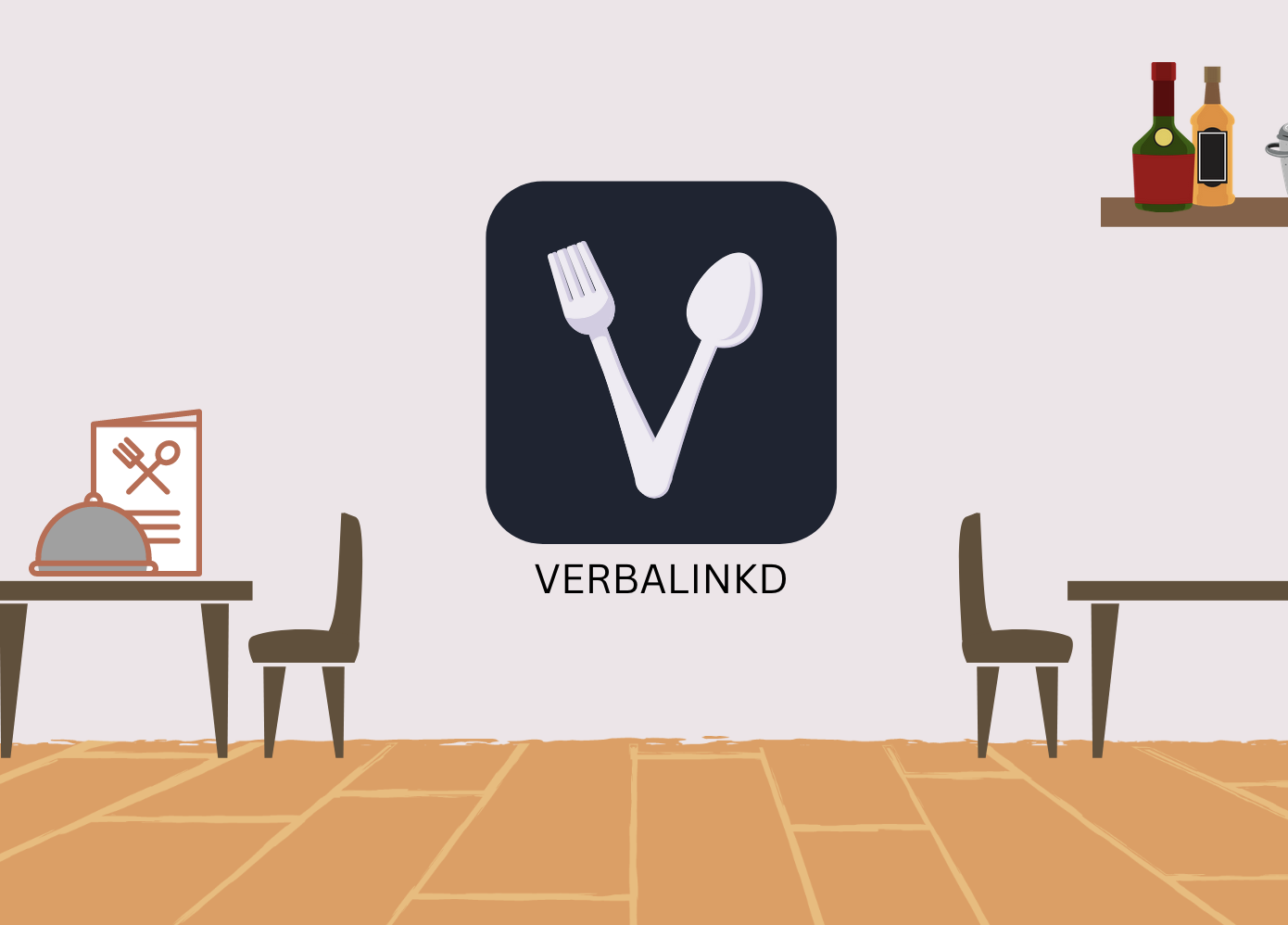Imagine that you are fresh off the boat in the United States from China. You have decided to build a new family on the American Dream by starting an authentic Sichuan-style restaurant. You try to register your new business with the government, but you struggle due to your limited English proficiency. You run into problems with designing the interior of your restaurant, and you struggle to communicate with maintenance people to help you fix your problems.
Unfortunately, there aren’t many tools around to help you. However, for my first project in the QUEST Honors program at UMD– BMGT 190H: Intro to Design and Quality– my team and I bring you Verbalinkd, an app with various features to connect immigrant restaurant owners with the resources and connections they need to thrive in America. Our app focuses on connecting these restaurant owners with service providers they can communicate with, so they can build strong business relationships and actually achieve their goals. It was designed with non-native English speakers in mind and aimed to provide them with a clear and straightforward interface to access relevant resources.
To develop Verbalinkd, our team went through a thorough process. We started by interviewing restaurant owners all over our campus, collecting research on the challenges they face on a daily basis. We created user personas to better understand the needs of our audience. One common thread within our interviews was the communication barrier faced by immigrant restaurant owners– which comprise over 40% of restaurant owners– and decided to target the people that face this unique problem. From there, we brainstormed and refined ideas before creating wireframes and eventually a prototype.
Throughout the design process, we made various decisions, such as which features to include, how to prioritize them, and how to incorporate user feedback. For instance, we decided to include features such as a marketplace to connect restaurant owners with service providers and a maintenance request form to tailor services to an owner’s specific needs. Since our target audience struggles with communication, we prioritized ease of use, accessibility, and connection efficacy in order to ensure that they could meet their goals in the most seamless and efficient way possible.
We utilized various tools and techniques such as Kanban boards, Gantt charts, iterative prototyping, and decision matrices to streamline the design process. We also worked collaboratively as a team, effectively communicating and sharing ideas to develop a cohesive and effective product. Through this experience, I learned how to work in multidisciplinary teams, think innovatively, identify problems, and create solutions. With the help of my mentor and my team, we were able to design a solution to a very real problem that affects a large part of our community. I’m excited to apply my new skills for what might come next!
The Solution


Meet the Team

I couldn’t have imagined creating this product with any other team. A great big thank you to all of my team members and our mentor.
